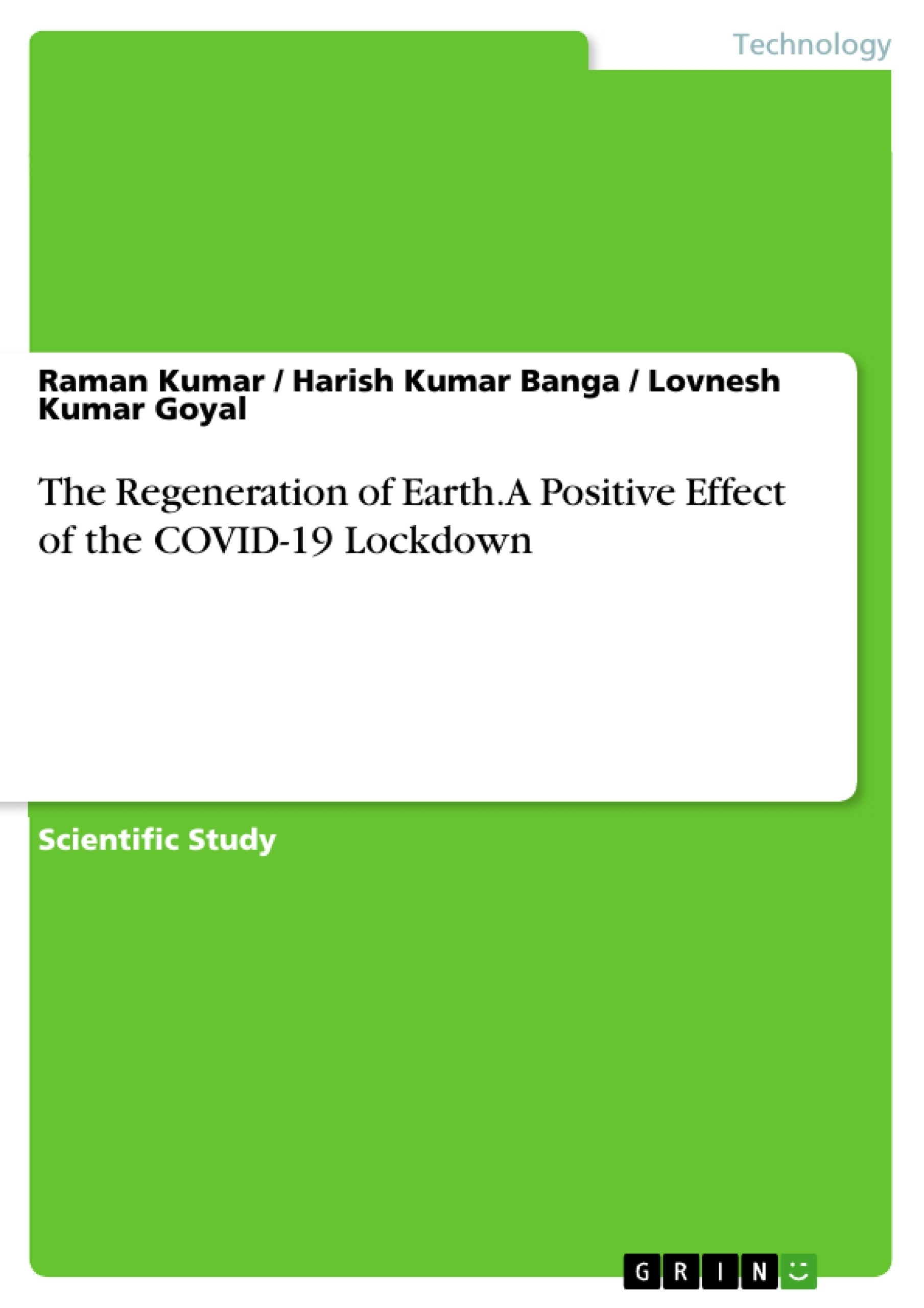This paper analyses how the earth is able to heal due to the COVID-19 lockdown.
Humans' life and activities have always been influenced by Earth's climate from the first stages of its existence. World population concentration is confined in a relatively small region where the climate conditions are most favourable to human life and activities. Although the inhabited area is increasing gradually, the areas with less favourable conditions are developing relatively slow. It imposes more and more stress on the natural resources available on the Earth's limited field. Agricultural activities, the backbone of the economy of many countries, depend primarily on the weather and climate of a particular area.
Inhaltsverzeichnis (Table of Contents)
- Introduction
- Problem Formulation
- Degeneration of the Earth's Environment
- Global Warming
- Desertification
- Deforestation
- Loss of Biodiversity
- Ozone Depletion
- Disposal of Wastes
- Healing the Earth
- Where to Start?
- Milestones to heal Earth
- Earth Day
- Climate System Models
- Institutional foundations
- Is Mother Nature healing itself?
- Mitigation
Zielsetzung und Themenschwerpunkte (Objectives and Key Themes)
This article examines the impact of human activity on the Earth's environment and proposes solutions to mitigate the damage caused by pollution and climate change. The text explores the relationship between human activities, climate change, and the health of the planet, advocating for a more sustainable approach to resource use and environmental protection.
- Human impact on the environment
- Climate change and its consequences
- The importance of sustainable practices
- The potential for environmental healing
- Mitigation strategies and their effectiveness
Zusammenfassung der Kapitel (Chapter Summaries)
- Introduction: This chapter sets the stage by discussing the interconnectedness of human life and the Earth's climate. It highlights the increasing stress placed on natural resources due to human population growth and activities. The chapter also emphasizes the need for better planning and management to address the challenges posed by climate change.
- Problem Formulation: The chapter delves into the global impact of human activities on the environment, particularly focusing on climate change. It explores the theory of Gaia, suggesting that the Earth should be viewed as a living organism whose health requires attention. The chapter argues that the health of the planet is paramount and that the survival of all life forms is interconnected.
- Degeneration of the Earth's Environment: This chapter outlines the detrimental effects of human activities on the Earth's environment. It discusses various environmental issues like global warming, desertification, deforestation, biodiversity loss, ozone depletion, and waste disposal. The chapter emphasizes the urgency of addressing these issues to prevent further damage to the planet.
- Healing the Earth: This chapter focuses on solutions and strategies for mitigating the environmental damage caused by human activities. It explores different approaches to healing the Earth, including individual actions, societal changes, and technological innovations. The chapter also highlights the importance of embracing sustainable practices and promoting environmental awareness.
Schlüsselwörter (Keywords)
This article focuses on key concepts such as climate change, environmental degradation, sustainability, mitigation, and the Earth's healing process. The text also addresses the impact of human activities on the environment, emphasizing the need for responsible resource management and policy changes to protect our planet.
- Arbeit zitieren
- Raman Kumar (Autor:in), Ph.D Harish Kumar Banga (Autor:in), Lovnesh Kumar Goyal (Autor:in), 2021, The Regeneration of Earth. A Positive Effect of the COVID-19 Lockdown, München, GRIN Verlag, https://www.hausarbeiten.de/document/1022316


